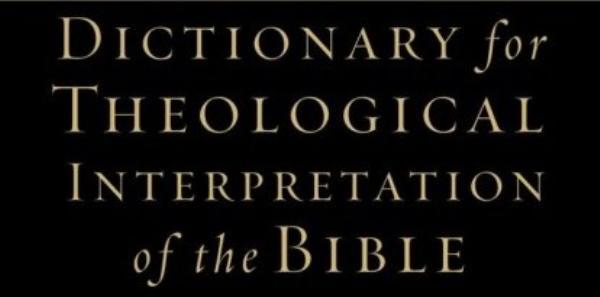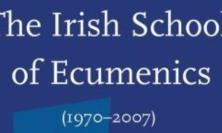There are two questions concerning the New Testament that beset intelligent readers wanting to open its pages. The first is this: is there an impassable barrier between scripture study and theology (which might be crudely paraphrased as ‘do biblical scholars believe in God?’)? The second is like unto it: is it possible to read the New Testament in a way that is challenging, intellectually demanding, but also spiritually fulfilling? Here now is a book for those who find themselves anxious about these two questions; and the tone of it may be set for English readers by the fact that Tom Wright, the indefatigable bishop of Durham (how does he find the time to do all that he does?) is one of the editors. That is to say that the prevailing attitude will be intelligent, in touch with modern biblical scholarship, and from within the faith community (even if largely at the evangelical, white and male end of the community).
All the chapters of this book have already appeared in print, in the Dictionary for Theological Interpretation of the Bible; but it is none the worse for that, having brought together something on each of the 27 books of the New Testament, and combining serious biblical scholarship with a sense that God is to be encountered in the scriptures. There is, as Vanhoozer points out in his introduction, a widespread feeling that biblical scholarship has been wandering in the desert these past two centuries, without finding anything to quench the thirst of the human spirit, and anything that restores our sense of the Bible as bread (and water) of life is to be welcomed with open arms. What this book wishes to do, without undoing the advances in scripture scholarship of the last two hundred years, is to study God and the mighty acts of God. One important element in the enterprise is that the Bible’s interpretation is not the task of biblical scholars alone, but ‘the joint responsibility of all the theological disciplines and of the whole people of God’ (p.18). So this is a book for anyone seriously interested in the New Testament, who wants to read it as Scripture without surrendering his or her God-given critical intelligence.
One advantage of the book’s origin within evangelical Christianity is that the authors tend to give references and expect you either to be familiar with the text or to have a bible ready to hand. Let me recommend that you read this with a copy of the New Testament (preferably more than one version) open on your desk.
It will not be possible within the space of this review to do justice to all the contributions, but let me mention just some of the articles, to encourage you to dip into the book. Robert Gundry on Matthew is very good indeed, showing the crucial part that Matthew has played in theology for two millennia; many different, not to say mutually contradictory, theological positions have been justified from the first Gospel. One incidental benefit of this book (and of Gundry’s contribution in particular) will be, for many readers, the discovery of just how different the texts of the New Testament are from one another. Thorsten Moritz properly insists on Mark’s ‘narrative theology’, explains how and why Mark came back into fashion in the 19th century and illuminatingly suggests how the first three verses of the Gospel are the key to Mark’s enterprise. The piece on John’s Gospel, by S. A. Cummins, should be read slowly and reflectively, checking it against the text of the Gospel. Cummins helpfully reminds us, against the conventional view, that the text of John contains within it various theological approaches to the mystery of Jesus, that there was ‘widespread ecclesial ownership of John during the first half of the 2nd century’ (p. 61). He also notes recent trends that move in the direction of accepting that the Fourth Gospel preserves authentic historical memories. At the same time, however, he insists on the properly theological concerns that are so very much at the heart of John’s Gospel.
The chapter by Christopher Bryan on Romans can hardly be bettered as a statement of what that difficult letter is about. Tom Wright offers a lovely piece on Philippians, which he sees as asking the eminently contemporary question: how do you live a totally new life in the midst of a society that simply does not share your values? Chuck Wannamaker on 1 Thessalonians offers a very useful and brief summary of the history of the interpretation of Paul’s earliest letter, as well as a very fair account of the difficulties involved in seeing 2 Thessalonians as Pauline, although he is not, unlike many scholars, finally of the view that someone else wrote it. Jon C. Laansma gives a masterly account of the complexities of the difficult but haunting Letter to the Hebrews. William R. Baker is interesting, perceptive, and knowledgeable on the history of the interpretation of the Letter of James, which should be read by anyone inclined to discount that powerful letter (including Luther, of course, who thought it was ‘an epistle of straw’!). Finally, Francesca Aran Murphy contributes a helpful piece on the Book of Revelation, asking why its inclusion in the canon was so complex. She discusses some fascinating exegetical adventures in the history of interpretation of this very striking book: these include a little-known but sensitive treatment by the Venerable Bede, and the better-known, indeed very influential, work of Joachim of Fiore, and also painting (Jan van Eyck – and she might have mentioned Blake, of course), and music (Messiaen).
And so on. Read all the essays in this book; be aware that they come from only one part of the complex world that is biblical scholarship, but to say that is not to discount their message, only to point out that there are other intelligent and believing approaches. It is of immense importance that we cherish the astonishing gift we have in the New Testament (and its dialogue partner the Old Testament), which enables us to watch the attempts of the first generation of Christians to express in words that which cannot be expressed in words. It also allows us to eavesdrop on the debates within the Church as to whether and how this or that text pointed sufficiently to the mystery of Christ. Many people will find great help in this book.
The reviewer, Nicholas King SJ, is a tutor in Biblical Studies at the University of Oxford.
![]() Find this book on SPCK's web site
Find this book on SPCK's web site






